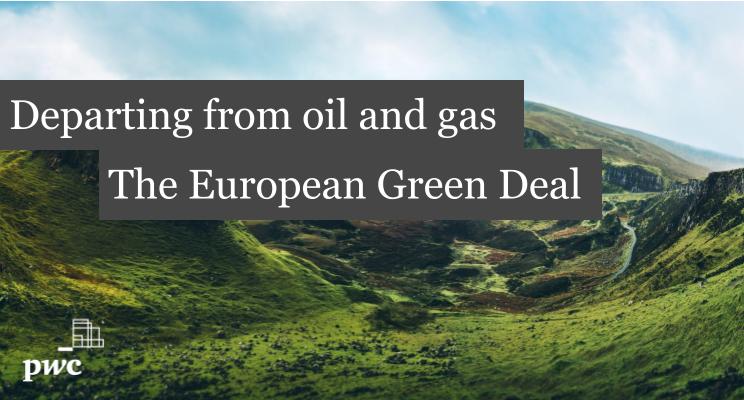
Investing in Central and Eastern Europe
Public funding for new business opportunities in CEE
On 18 May we hosted a webcast where we talked about the new programming period 2021-2027, which opens up opportunities to fund projects through several EU programmes. It is a challenging task to select a suitable programme, or a call for proposal so that the investment activity you are planning is justified.
We shared insights into these areas:
- investment decisions & your business case outline
- selection of a suitable programme to finance your business plans (Grants & Incentives roadmap)
- preparation and submission of project applications.
The event was hosted by Mieczysław Gonta, Partner, Tax & Legal Department from PwC Poland and Zuzana Palkechová, Senior Manager, State Aid services, PwC Slovakia.
We were joined by external special guests. Many thanks to our panelists:
- Michał Paschalis-Jakubowicz, CEO at Oktawave, Poland
- Marianna Čierniková, Technical Specialist at Rona, Slovakia.
Missed the event? Watch the highlights:
Watch the 15-minute executive summary of the webcast
Watch the teaser video from the webcast

When local businesses expand into new markets outside their home country, it doesn’t just improve their profitability, but also builds the host country’s economic prosperity.
Entering new markets often comes with a number of questions relating to the performance of the selected economy and the support businesses can obtain from governments seeking to attract business to their countries. Our PwC CEE network has prepared this guide to make it easier to search for investment opportunities and shortlist the most attractive CEE markets for expansion.
After you have selected or shortlisted potential CEE countries for future investment, our CEE network of PwC professionals can support and work closely with you on the following:
Evaluating project feasibility and obtaining maximum available regional investment aid
Consultancy for IPCEI, Horizon Europe, CEF and RRF
Innovation fund services
Notification of state aid to the European Commission
Site selection
Establishing a company in the region
Labour law, international mobility (expats)
Local and cross-border tax advice
Accounting advice
ESG agenda
- Bulgaria
- Croatia
- Czech Republic
- Estonia
- Hungary
- Latvia
- Lithuania
- Poland
- Romania
- Slovakia
- Slovenia
Bulgaria
Type of incentives:
Tax incentive, cash grant
What investment projects incentives are available:
Industrial production
Intensity aid: percentage of project costs and expenses for which an incentive can be obtained:
From 25% (Sofia region) to 50% (other regions)
Minimum investment volume:
No
Main eligibility criteria and rules:
Applicants should have manufacturing activities located in high unemployment municipalities (a list is published each year). If the aid qualifies as regional aid, the applicant should carry out a qualifying initial investment. Lower requirements apply if the aid is provided as de minimis. Cash grant schemes require newly-created jobs.
Croatia
Type of incentives:
Cash grant, tax incentives, subsidized loans and guarantees
What investment projects incentives are available:
Industrial production, tourism, technology centres
Intensity aid: percentage of project costs and expenses for which an incentive can be obtained:
Up to 100%, depending on the type of the activity, regiona and size of the company.
Minimum investment volume:
Yes, depending on the type of incentive scheme, the region and size of the company, there is a minimum threshold. The minimum eligible costs are EUR 50,000.
Main eligibility criteria and rules:
Different incentive schemes are available, such as cash grants and subsidized loans from ESIF funds, Tax incentives based on the “Law on State Aid for Research and Development Projects” and "Investment Promotion Act”.
Quantitative criteria and specific qualitative criteria depend on the type of investment, with a minimum threshold of criteria depending on where the investment is implemented.
Czech Republic
Type of incentives:
Real estate tax exemption, tax incentive, contribution for newly-created jobs
What investment projects incentives are available:
Industrial production, technology centre, shared services centre
Intensity aid: percentage of project costs and expenses for which an incentive can be obtained:
From 25% to 45%, depending on the size of the company
Minimum investment volume:
Yes, depending on the region, the nature of the investment and the size of the company
Main eligibility criteria and rules:
Minimum share of new technologies relating to the investment, minimum investment amount, minimum number of newly-created jobs within 3 years, start of production.
Estonia
Type of incentives:
Estonia operates a distribution-based corporate income tax regime that allows the taxation of profits to be deferred until they are distributed, rather than when they are earned. This regime is applicable to all Estonian companies and Estonian permanent establishments of foreign companies.
What investment projects incentives are available:
Industrial production, technology centre, shared services centre
Intensity aid: percentage of project costs and expenses for which an incentive can be obtained:
N/A
Minimum investment volume:
No
Main eligibility criteria and rules:
N/A
Hungary
Type of incentives:
Tax incentive, cash grant
What investment projects incentives are available:
Industrial production, technology centre, shared services centre
Intensity aid: percentage of project costs and expenses for which an incentive can be obtained:
Up to 50%, depending on the region. If the investment incentives recipient is a SME, the maximum intensity can be increased.
Minimum investment volume:
Yes, depending on the type of incentive scheme and region of investment
Main eligibility criteria and rules:
Minimum of investment amount
Latvia
Type of incentives:
Tax incentive
What investment projects incentives are available:
The only incentives are in the free ports and Special Economic Zones
Intensity aid: percentage of project costs and expenses for which an incentive can be obtained:
80% of tax
Minimum investment volume:
No
Main eligibility criteria and rules:
Registration in a free port and SEZ and signed agreement with investment plan attached
Lithuania
Type of incentives:
Tax incentives, contributions for newly-created jobs, real estate tax exemption
What investment projects incentives are available:
Industrial production (certain exceptions apply, e.g. retail), technology centre, shared services centre
Intensity aid: percentage of project costs and expenses for which an incentive can be obtained:
Up to 25%
Minimum investment volume:
Yes, depending on the industry, region and type of incentives, e.g. EUR 1.45 mil. (for contributions for newly-created jobs, at least 20 employees). For tax incentives for large projects a minimum of EUR 20 mil. is required, (EUR 30 mil. in the Vilnius region).
Main eligibility criteria and rules:
Minimum investment amount, minimum number of newly-created jobs, type of industry, minimum duration of operations.
Poland
Type of incentives:
Tax incentive, cash grant, real estate tax exemption
What investment projects incentives are available:
Industrial production, technology centre, shared services centre, R&D centre
Intensity aid:
Tax incentive and cash grant: Depends on project location, calculated as a product of project costs (CAPEX or OPEX) and regional state aid intensity (from 10% to 70% of CAPEX or 2-years’ labour costs of newly-created jobs.) Real estate tax exemption: (i) regional state aid scheme: same rules as for tax incentives and cash grant, specific rules (e.g. eligible costs) depend on the resolution of the respective Commune Council (ii) de minimis aid scheme: EUR 200 thou. for 3 consecutive tax years, specific rules (e.g. eligible costs) depend on the resolution of the respective Commune Council.
Minimum investment volume:
Dependent on the incentive, project location, type of investment and the size of the company. Tax incentive: the minimum eligible costs range from EUR 43.5 thou. to EUR 21.8 mil. Cash grant: the minimum eligible costs range from EUR 65.4 thou. to EUR 17.4 mil. For real estate, specific tax exemption rules apply based on the resolution of the respective Commune Council.
Main eligibility criteria and rules:
Quantitative criteria and specific qualitative criteria depend on the type of incentive, type of investment, with a minimum threshold of criteria depending on the region.
Romania
Type of incentives:
Cash grants and contributions for newly-created jobs
What investment projects incentives are available:
Industrial production, technology centre, shared services centre
Intensity aid: percentage of project costs and expenses for which an incentive can be obtained:
50% (intensity aid for 6 regions), 30% (for 1 region) and 10% (for Bucharest-Ilfov). If the investment incentives recipient is a SME, the maximum intensity can be increased. Higher intensity aid applies for R&D projects.
Minimum investment volume:
No
Main eligibility criteria and rules:
Eligibility criteria and rules depend on the funding source and published calls for proposals. The company must have a positive net profit margin for one of the three most recent years and positive equity for the most recent financial year.
Slovakia
Type of incentives:
Cash grant, tax incentive, contribution for newly- created jobs, rent / sale of real estate at a discounted price
What investment projects incentives are available:
Industrial production, technology centre, combined project of industrial production and technology centre, shared services centre
Intensity aid: percentage of project costs and expenses for which an incentive can be obtained:
From 25% to 35% depending on the region. If the investment incentive recipient is a SME, the maximum intensity can be increased by 10% to 20% based on the size of the company.
Minimum investment volume:
Yes. Industrial production: EUR 0.1 mil. – 15 mil. based on the region and form of investment aid requested. Technology centres: EUR 50 thou. – 200 thou. Based on priority / non-priority areas and the form of investment aid requested.
Main eligibility criteria and rules:
A maximum of 3 – 5 years for project implementation apply, minimum share of new technologies relating to the investment, minimum investment amount, minimum number of newly-created jobs, priority of the project sectoral specification, region of investment, min. multiple of average salary in district according to type of project.
Slovenia
Type of incentives:
Tax incentive, cash grant, contribution for newly-created jobs and rent / sale of real estate at a discounted price
What investment projects incentives are available:
Industrial production, technology centre, shared services centre
Intensity aid: percentage of project costs and expenses for which an incentive can be obtained:
Depends on incentive schemes and region. ESIF contribution up to 70%
Minimum investment volume:
Yes
Main eligibility criteria and rules:
Eligibility criteria and rules depend on the segment of the aid and type of incentives. In general, ESIF rules apply.
"Since its launch two years ago, the European Green Deal brings new legislation into play which aims to encourage and penalise businesses to operate in a more carbon efficient and sustainable way. Simply put, the European Green Deal is one monumental, legislative action plan for achieving carbon neutrality in the EU by 2050. And it is one which will increasingly affect carbon emissions, business operations and taxes in the next few decades."
Let us know how we can help
Contact us




